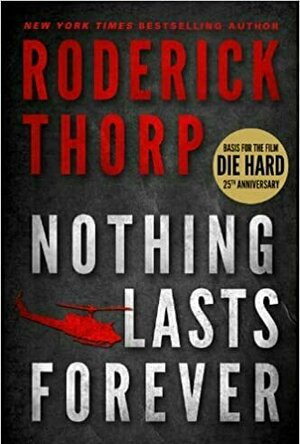Nothing Lasts Forever (Die Hard, #1)
BookThis item doesn’t have any media yet
1979 | Crime
"High atop a Los Angeles skyscraper, an office Christmas party turns into a deadly cage-match between a lone New York City cop and a gang of international terrorists. Every action fan knows it could only be the explosive big-screen blockbuster Die Hard. But before Bruce Willis blew away audiences as unstoppable hero John McClane, author Roderick Thorp knocked out thriller readers with the bestseller that started it all.
A dozen heavily armed terrorists have taken hostages, issued demands, and promised bloodshed all according to plan. But they haven't counted on a death-defying, one-man cavalry with no shoes, no backup, and no intention of going down easily. As hot-headed cops swarm outside, and cold-blooded killers wield machine guns and rocket launchers inside, the stage is set for the ultimate showdown between anti-hero and uber-villains. Merry Christmas to all, and to all a good fight to the death. Ho ho ho!"
Related Items:
| Published by | Graymalkin Media |
| Edition | Unknown |
| ISBN | 9781935169840 |
| Language | English |
Images And Data Courtesy Of: Graymalkin Media.
This content (including text, images, videos and other media) is published and used in accordance
with Fair Use.
| 9-10 |
|
0.0% (0) | |
| 7-8 |
|
0.0% (0) | |
| 5-6 |
|
50.0% (1) | |
| 3-4 |
|
50.0% (1) | |
| 1-2 |
|
0.0% (0) |
